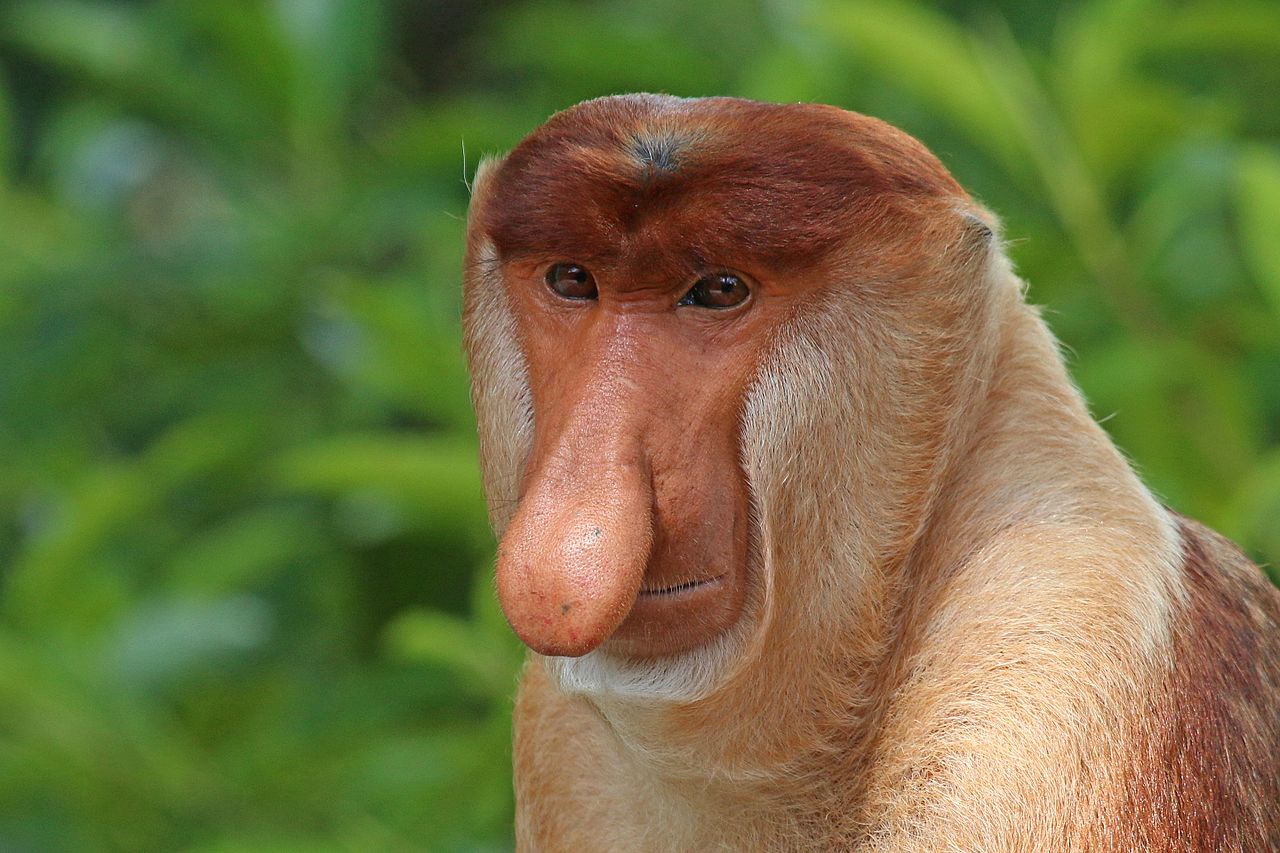
Proboscis Monkeys
Today we travel not to Oz but Borneo, the world’s third-largest island. It’s so big that it houses three nations: Brunei, Indonesia, and Malaysia.
On this island lives a bizarre animal that might have you believe Borneo actually is in Oz, not Southeast Asia.

The word proboscis more often pairs with an elephant than a monkey. From the Greek proboskis, meaning “elephant’s trunk,” originally combining the roots pro (forward) and boskein (to nourish), a proboscis initially signified a “means for taking food.” Today, we often employ it to mean schnoz. Or nose. Elephants don’t actually ingest food or water with their proboscises, but they do use them as a tool to get nourishment. Other members of the animal kingdom utilize a proboscis to keep themselves alive, such as moths and butterflies.
Today’s headliners, however, use their snoots for something different entirely.
The Jimmy Durante of the simian world is the Proboscis monkey, AKA the long-nosed monkey. The males of this species pack some serious nose.

As it turns out, female Proboscis monkeys like their males to have large noses. The reason? The noses do not affect survival; the monkeys do not use them to feed. Instead, primatologists theorize louder vocalizations attract females to males. The larger the size of the nose, the louder a Proboscis monkey can yell, due to an echo chamber created by the giant organ. Why do the females prefer loud males? Some mysteries may never be solved.
Believe it or not, the oversized nose of this creature is not what brought me to it. Nor is it the red penis and black scrotum of the males. Not the bright orange coat of fur. Not the bright blue face with which infants are born. The webbed toes of the species do tangentially relate to the monkey’s introduction to the world of The Mountains Are Calling, though.
If you pieced together the reference to the Wizard of Oz, I’m certain you already understand what these monkeys (kinda) do.
Proboscis monkeys are arboreal, though they happen to be the world’s greatest primate swimmers, thanks in no small part to their webbed feet. They are talented enough to swim over 60 feet underwater. Though they prefer the trees, sometimes food is across the river. In Borneo, that means crocodile-infested rivers. The monkeys evolved to speedily evade these predators by being wonderful in the water.
How do you make your trip from treetops to the river to safety even faster? You look to your compatriots in Oz and take to the air.
Proboscis monkeys soar from trees to rivers. Their descents need to be seen to be believed:
Proboscis monkeys might have a flying head start on hungry crocs, but they have a harder time overcoming deforestation. Humans have rapidly diminished Borneo’s rainforests. As a result, the Proboscis monkey finds itself an endangered species.
Unlike in the films, we cannot simply click the heels of our shoes together and escape the natural disaster. If we want to save the long-nosed monkeys, we’ll have to do something real.
Further Reading and Exploration
Proboscis Monkey – National Geographic
Proboscis Monkey – International Union for Conservation of Nature Red List
Status and Conservation of Proboscis Monkeys (Nasalis larvatus)
in Sabah, East Malaysia – Shah, Bernard, and Nathan
Strange Tales and Forgotten Stories About The Wizard of Oz – History Collection














Pingback: Draco – themountainsarecalling.earth